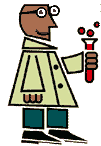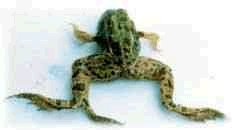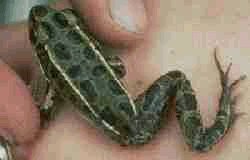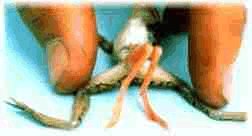National Institute of
Environmental Health Sciences


NIEHS Kids' Pages Index
Links Disclaimer
Privacy Policy and Disclaimers
National Institute of |
 NIEHS Kids' Pages Index Links Disclaimer Privacy Policy and Disclaimers |
 | Note -- sites marked with  are NOT NIEHS sites. Please read the following information carefully before proceeding to other websites. are NOT NIEHS sites. Please read the following information carefully before proceeding to other websites. |
When you encounter this image  or the words "Non-NIEHS Link", it means that by following that link you will be leaving the NIEHS website. NIEHS is NOT responsible for the content of other websites. Sites maintained by outside organizations may be changed without notice to NIEHS. Therefore, unless the link is to another U.S. government sponsored webpage, endorsement by NIEHS is not implied, and NIEHS does not guarantee their continuing safe content or privacy policies. So please ask your parent or guardian before continuing, and especially before providing any information via the internet or by e-mail. When last reviewed, this website seemed suitable for you to visit; but if you have any difficulties or concerns about it, please let us know. For more information, we recommend you visit and review our Disclaimers and Privacy Policies. or the words "Non-NIEHS Link", it means that by following that link you will be leaving the NIEHS website. NIEHS is NOT responsible for the content of other websites. Sites maintained by outside organizations may be changed without notice to NIEHS. Therefore, unless the link is to another U.S. government sponsored webpage, endorsement by NIEHS is not implied, and NIEHS does not guarantee their continuing safe content or privacy policies. So please ask your parent or guardian before continuing, and especially before providing any information via the internet or by e-mail. When last reviewed, this website seemed suitable for you to visit; but if you have any difficulties or concerns about it, please let us know. For more information, we recommend you visit and review our Disclaimers and Privacy Policies. | |
Children's Health |
NIEHS Children's Health Initiatives & Materials:
Other Resources:
|
 take you outside the NIEHS Kids' Pages;
take you outside the NIEHS Kids' Pages;    |
|
 DNA, Genes, and Clones |
Scientists are now spending a lot of time studying genes and DNA because that will help us learn more about ourselves and help us stay healthy. The NIH Human Genome Project But our genes are not the only thing that determines whether we will be healthy or sick. Our environment and how it reacts with our genes is also very important. So the National Institute of Environmental Health Sciences has started an Environmental Genome Project to help us understand which genes are more likely to be affected by our environment. And those studies will help us understand why some people get sick from exposures (like cigarette smoke), but others do not.
Gene, DNA, and Cloning Resources(Note -- links designated with a take you outside the NIEHS Kids' Pages -- don't forget to come back.) take you outside the NIEHS Kids' Pages -- don't forget to come back.)Making it in a Tough Environment -- You and Your Genes -- in story book form, for the younger students and elementary classrooms. The National Human Genome Institute Educational Resources DNA from the Beginning (An Animated Primer) Creating a Cloned Sheep Named Dolly  NIEHS Environmental Genome Project The National Human Genome Research Institute  |
 | Note -- sites marked with  are NOT NIEHS sites. Please read the following information carefully before proceeding to other websites. are NOT NIEHS sites. Please read the following information carefully before proceeding to other websites. |
When you encounter this image  or the words "Non-NIEHS Link", it means that by following that link you will be leaving the NIEHS website. NIEHS is NOT responsible for the content of other websites. Sites maintained by outside organizations may be changed without notice to NIEHS. Therefore, unless the link is to another U.S. government sponsored webpage, endorsement by NIEHS is not implied, and NIEHS does not guarantee their continuing safe content or privacy policies. So please ask your parent or guardian before continuing, and especially before providing any information via the internet or by e-mail. When last reviewed, this website seemed suitable for you to visit; but if you have any difficulties or concerns about it, please let us know. For more information, we recommend you visit and review our Disclaimers and Privacy Policies. or the words "Non-NIEHS Link", it means that by following that link you will be leaving the NIEHS website. NIEHS is NOT responsible for the content of other websites. Sites maintained by outside organizations may be changed without notice to NIEHS. Therefore, unless the link is to another U.S. government sponsored webpage, endorsement by NIEHS is not implied, and NIEHS does not guarantee their continuing safe content or privacy policies. So please ask your parent or guardian before continuing, and especially before providing any information via the internet or by e-mail. When last reviewed, this website seemed suitable for you to visit; but if you have any difficulties or concerns about it, please let us know. For more information, we recommend you visit and review our Disclaimers and Privacy Policies. | |
NASA invites you to send your name into space!
Web Weather for Kids Contest 
Middle schoolers from around the USA are being invited to join Boulder,Colo., students in going head to head against a Denver television meteorologist in an on-line weather forecasting contest. The contest is open to anyone born between 1986 and 1991. Mike Nelson, an on-air meteorologist at KUSA-TV in Denver will join middle schoolers in predicting the weather each day between February 8 and 11.
Each participant will predict highs and lows and give a thumbs up or down for precipitation the following day at Denver International Airport, using data available on the Web site. Scoring is based on how close each participant comes to forecasting Denver’s high and low temperature each day of the four days, and whether rain or snow does or does not fall.
Frogwatch USA 
You can participate. US Geological Survey Biological Resources Division) has launched Frogwatch USA, a new volunteer-driven frog and toad monitoring program, and they need your help to inform the public about it.
We are just starting this collection and would like to include input from a variety of cultures focusing on our world and our health. So please let us know of any quotes you would like to suggest relating to nature and health.
Education



| Privacy and Accessibility, Disclaimers and Copy Requests |
NIEHS Kids' Pages Home NIEHS Home |